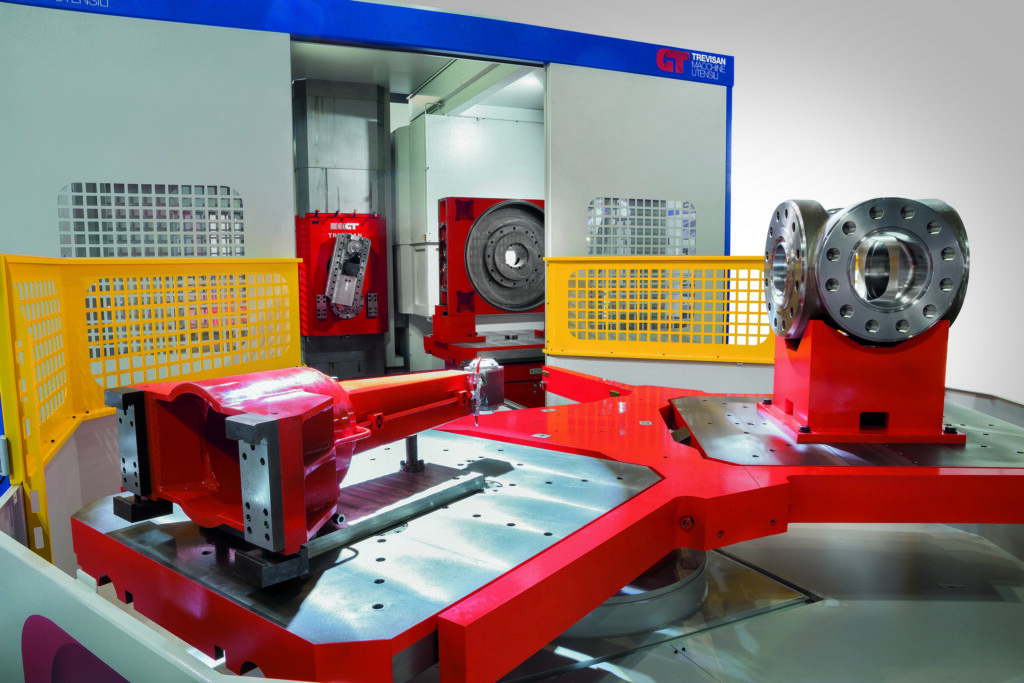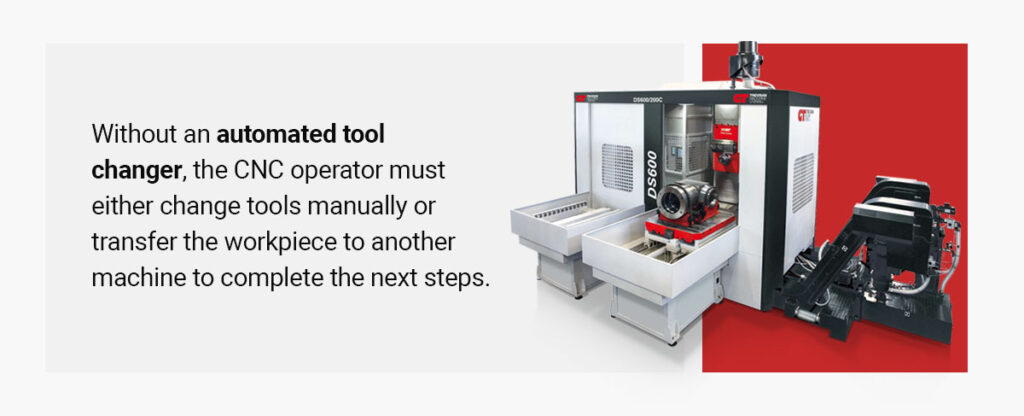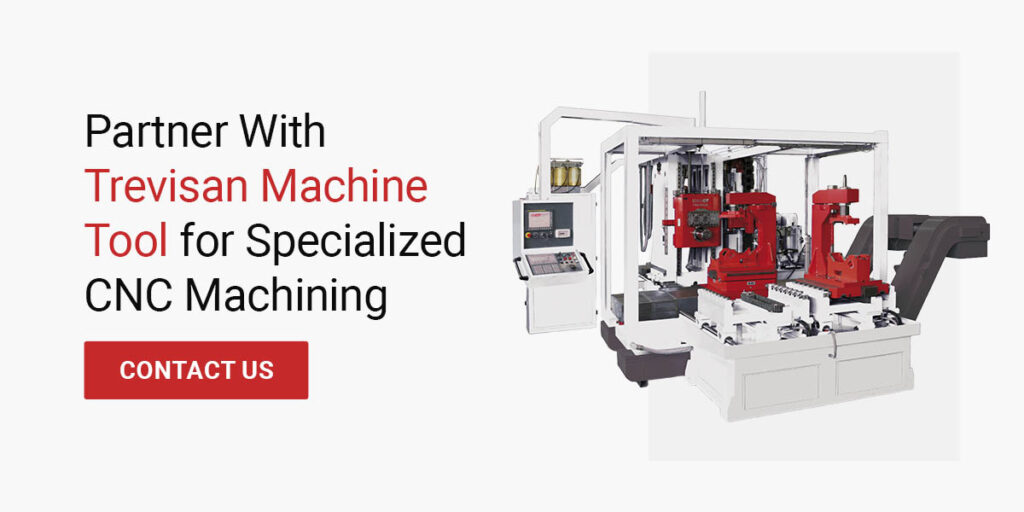
Computer numerical control machining is a modern industrial process that provides various benefits through automation. Businesses can use CNC machining to create the required designs, parts and components more accurately and efficiently. With the invention of CNC machine centers with automatic tool changers, manufacturers can save even more money and time on their CNC processes.
You’ll learn more about CNC machining centers in this guide. With this knowledge, you can determine if specialized CNC machining centers are right for your business.
What Are CNC Machines?
A CNC machine uses software and programmed sequences to control the movement of machining tools. Multiple types of CNC machines perform various processes depending on the requirements and desired output. Basic CNC machining is easy to learn, but mastering it necessitates programming knowledge and years of training and experience. Large-scale, commercial CNC machines require additional education and skills to operate.
“CNC machining” refers to the automated process of removing material using machines and computerized controls. A CNC machine cuts three-dimensional workpieces by subtracting layers of material to form the correct shape. This process is suitable for wood, metal, glass, plastic, stone, foam and more.
What Types of CNC Machines Are There?
The top two considerations when choosing a CNC machining center for your application are their function and number of axes.
The following are common CNC machines and their functions.
- Mill: A CNC mill is the most common type available. The machine rotates a cutting tool to remove material from a stationary workpiece. Milling tools can move horizontally or vertically across three to six axes.
- Lathe: A CNC lathe cuts and shapes workpieces while they rotate around a central axis. It can also perform sanding, drilling, turning and facing functions.
- Router: A CNC router carves designs into the surface of flat, soft materials on a worktable. The tool usually moves across the X, Y and Z axes and can also cut, mill and drill.
- Plasma cutter: A CNC plasma cutter uses a torch to cut heavy materials on a worktable. The tool’s nozzle blows gas, which an electric spark ignites and turns into plasma. The extreme temperatures can easily cut through metals.
- Laser cutter: CNC laser cutters are similar to plasma cutters, but use a laser instead. You can adjust the laser’s intensity depending on what you need to shape.
- Water jet: CNC jet cutters cut or carve materials using high-pressure water. This cooler process is essential for applications where heat can cause damage, such as with rubber, foam and plastic.
- Electric discharge: An electric discharge machine is a unique CNC machine that uses electrical arcs to cut and mold materials. It only works on conductive materials, usually hardened or heat-treated metals.
We can also classify CNC machines according to how many axes the tool can move on. Most CNC machines have between two and five axes and can move vertically and horizontally along the primary axes. However, some CNC machines have additional axes to perform more complex movements.
Trevisan Machine Tool horizontal CNC machines are available in four-, five- and six-axis variants and have U-axis control. The additional U-axis movement allows the tool to move perpendicular to the spindle’s centerline. When a tool can move along the U-axis, it can change the diameter of a hole during the machining procress. In the past, CNC operators could only change the machined diameter by manually adjusting the tool.
Types of CNC Milling Machines
CNC milling machines come with various axes and tool orientations, but the three most common types are as follows.
- Horizontal: A horizontal machining center has a horizontal spindle that moves sideways while the workpiece stays stationary. This setup allows chips to fall vertically, keeping them away from the piece.
- Vertical: A vertical machining center has a vertically oriented spindle. The workpiece sits flat, allowing gravity to keep it secure and stable.
- Universal: A universal matching center’s spindle moves vertically and horizontally. Most universal matching centers can move across five or more axes to machine complex pieces and increase efficiency.
Automatic Tool Changers in CNC Machines
Some CNC machine centers feature an automatic tool-changing mechanism. This additional functionality allows the machine to seamlessly switch tools and perform multiple functions in the machining process. CNC milling machines with an automatic tool changer can drill, tap, mill and contour a workpiece in a single setup.

For example, Trevisan Machine Tool’s horizontal machining centers have two spindles — one for the spindle quill and another with the U-axis facing head. The head’s unique design allows manufacturers to perform milling and turning processes in the same CNC machine. Trevisan Machines also have an ATC, which allows the CNC operator to change tools directly into either spindle for maximum efficiency.
What Is CNC Machining Used For?
CNC machining centers can perform various functions, such as facing, drilling, tapping, boring and milling. Professionals across multiple industries use CNC machining for its computerized and automated processes that reduce the risk of human error. Some of these industries include energy, manufacturing, automotive, aerospace and construction.
CNC machining centers with ATCs improve accuracy and reduce production time for parts that require multiple machining processes. Their automation is especially valuable to the energy, industrial, automotive and aerospace industries.
Advantages of CNC Machines
It’s possible to perform most CNC machining processes manually. However, businesses choose these advanced machines for the benefits they offer.
- Efficiency: CNC machines significantly speed up production speed and simplify the process, making it more efficient than manual work. Additionally, machines can run for days on end without stopping.
- Accuracy: Machines can reach an accuracy level that is not possible with manual labor, which is vital for industries where parts must meet precise specifications and tolerances.
- Consistency: CNC machines can produce incredibly accurate results with no human error. Every finished piece is consistently uniform.
- Cost savings: Manufacturers save money in labor costs with machines that need less manual interaction to operate. CNC machines’ output is high-quality, so there are fewer rejections and wasted materials.
CNC machine centers offer more advantages than traditional machines thanks to the ATC system. With automatic tool changing, manufacturers can eliminate changeovers, minimize workpiece handling, reduce production time and increase product quality.
Partner With Trevisan Machine Tool for Specialized CNC Machining
Trevisan Machine Tool sets the standard for high-performance CNC machine centers. We offer machining centers with integrated contour heads that can perform complex milling and turning operations, even for the most challenging manufacturing projects. Choose from our horizontal, vertical or Modulo Equipe machining centers to meet your product needs. We can also build customized machines to meet your requirements using our experience from over 60 years in the machining industry.
Contact us to learn more about our machines or request a quote today.

